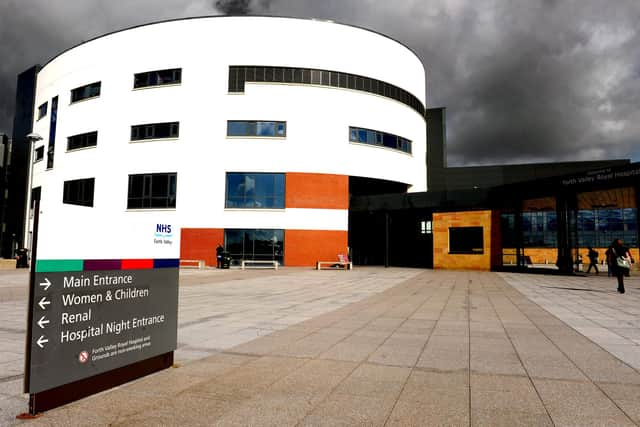NHS Forth Valley experts fear the second wave of COVID-19 could be much worse than the first
and live on Freeview channel 276
That is what Dr Graham Foster, NHS Forth Valley director of public health, believes and he said as much at an NHS Forth Valley press briefing on Monday.
He addded: “I think it has the potential to be worse, but I think the fact we have taken such stringent measures over the last few weeks is a good thing.
Advertisement
Hide AdAdvertisement
Hide Ad“However, it has the potential to be worse than the first wave if we let it, so it needs to be controlled. We need to find the right balance between really tight control measures and people living their lives.


“It’s about trying to get the middle ground and we have done really well in recent weeks. When schools came back there weren’t big problems, but it took a lot of work to keep staff and pupils safe.”"
He added that the methods used to keep schools open could be used to open up other parts of society which are currently restricted.
This so-called “second wave” of the pandemic, which had been widely predicted, is certainly different from the first wave, according to NHS Forth Valley medical director Andrew Murray.
Advertisement
Hide AdAdvertisement
Hide AdHe said: “The last two or three weeks have really shown examples of the second wave we talked about. There is no doubt we are now right in the middle of the second wave of COVID-19.
“It’s very similar with the first wave in comparison, although we do have more patients in intensive care than we did in the first wave, but we have been able to cope with that.
“During the first wave we had about 50 per cent occupancy in hospital beds – so every second bed was vacant.
"Now we have around 90 per cent occupancy and we are doing all we can to protect the patients within the hospital who don’t have COVID-19, making a lot of changes to how we deliver health care to keep people as safe as possible.
Advertisement
Hide AdAdvertisement
Hide Ad“Everyone is struggling a bit more with the second wave than they did with the first wave.”
Grangemouth work wear firm is all smiles over face mask successSLOPEmeisteR Brewing Company gets permission to deliver craft beer
During Monday afternoon’s briefing it was stated there were 14 people in ICU with COVID-19, and 45 people in the hospital being treated for coronavirus.
“Those numbers are slightly in excess of the first wave,” said Mr Murray. “That could be because our testing capacity is radically different. The main thing that is different from the first wave is that this time we have to keep our other hospital services operating as well.
Advertisement
Hide AdAdvertisement
Hide Ad“We want to continue to allow people to access healthcare. The effects on staff are probably different this time around and the workload has increased.”
Dr Foster also revealed his frustration at how close the Forth Valley area – and Scotland – came to getting rid of the coronavirus completely and stated he wants people to adhere to COVID-19 guidelines now in order to have the chance of enjoying less restrictions over the festive season
“We almost entirely eliminated the virus in the summer,” he said.
"Then we removed a lot of restrictions and allowed a lot of travel, which led to COVID-19 coming back."
Thank you for reading this article on our free-to-read website. We're more reliant on your support than ever as the shift in consumer habits brought about by Coronavirus impacts our advertisers.
Please consider purchasing a subscription to our print newspaper to help fund our trusted, fact-checked journalism.
Comment Guidelines
National World encourages reader discussion on our stories. User feedback, insights and back-and-forth exchanges add a rich layer of context to reporting. Please review our Community Guidelines before commenting.